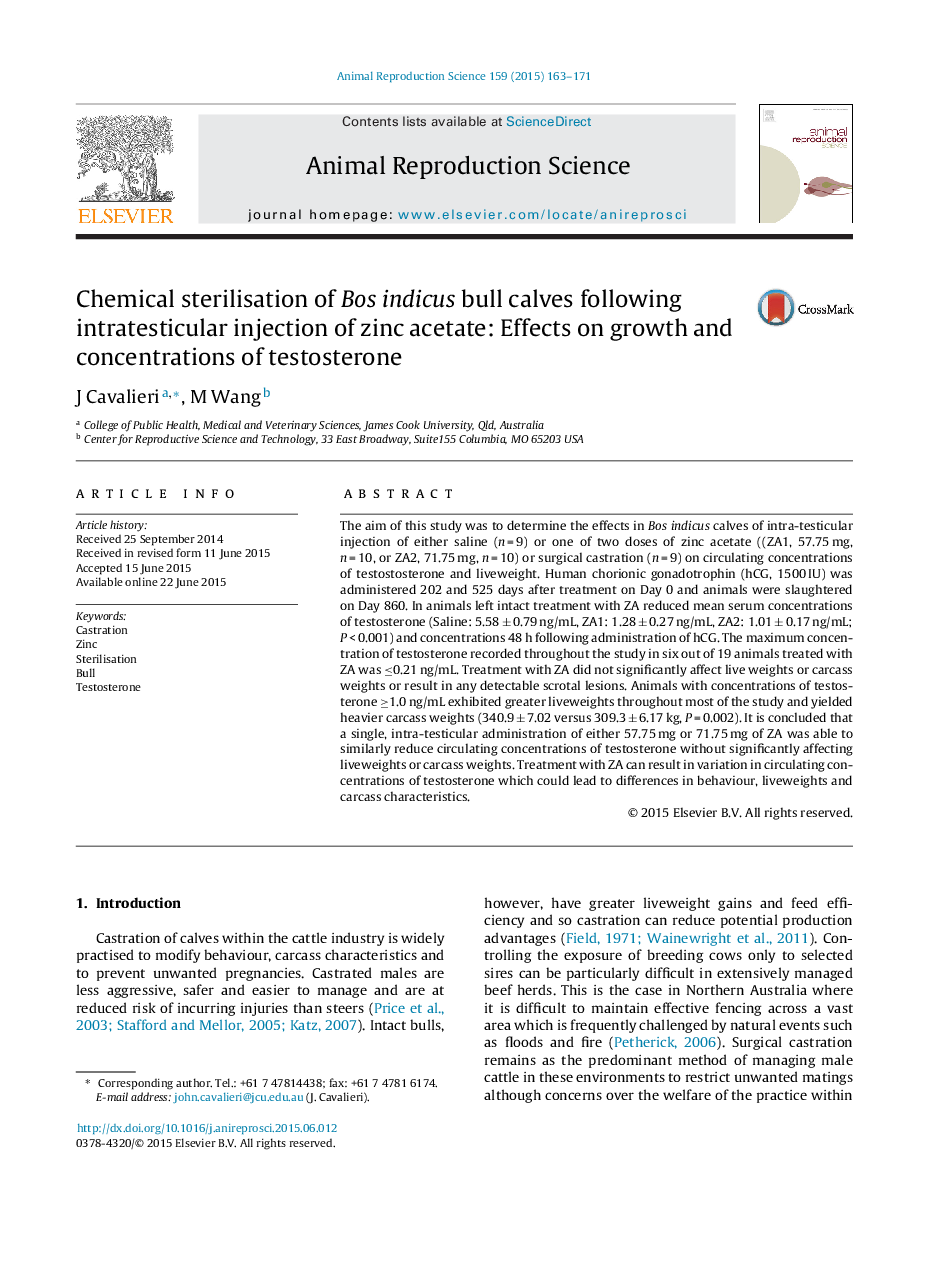| Article ID | Journal | Published Year | Pages | File Type |
|---|---|---|---|---|
| 2072646 | Animal Reproduction Science | 2015 | 9 Pages |
The aim of this study was to determine the effects in Bos indicus calves of intra-testicular injection of either saline (n = 9) or one of two doses of zinc acetate ((ZA1, 57.75 mg, n = 10, or ZA2, 71.75 mg, n = 10) or surgical castration (n = 9) on circulating concentrations of testostosterone and liveweight. Human chorionic gonadotrophin (hCG, 1500 IU) was administered 202 and 525 days after treatment on Day 0 and animals were slaughtered on Day 860. In animals left intact treatment with ZA reduced mean serum concentrations of testosterone (Saline: 5.58 ± 0.79 ng/mL, ZA1: 1.28 ± 0.27 ng/mL, ZA2: 1.01 ± 0.17 ng/mL; P < 0.001) and concentrations 48 h following administration of hCG. The maximum concentration of testosterone recorded throughout the study in six out of 19 animals treated with ZA was ≤0.21 ng/mL. Treatment with ZA did not significantly affect live weights or carcass weights or result in any detectable scrotal lesions. Animals with concentrations of testosterone ≥1.0 ng/mL exhibited greater liveweights throughout most of the study and yielded heavier carcass weights (340.9 ± 7.02 versus 309.3 ± 6.17 kg, P = 0.002). It is concluded that a single, intra-testicular administration of either 57.75 mg or 71.75 mg of ZA was able to similarly reduce circulating concentrations of testosterone without significantly affecting liveweights or carcass weights. Treatment with ZA can result in variation in circulating concentrations of testosterone which could lead to differences in behaviour, liveweights and carcass characteristics.
